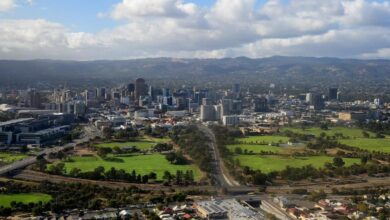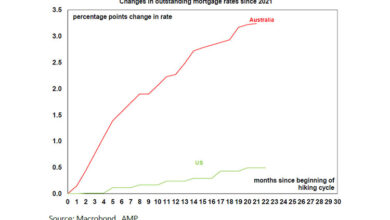Aussie brace for unemployment shock
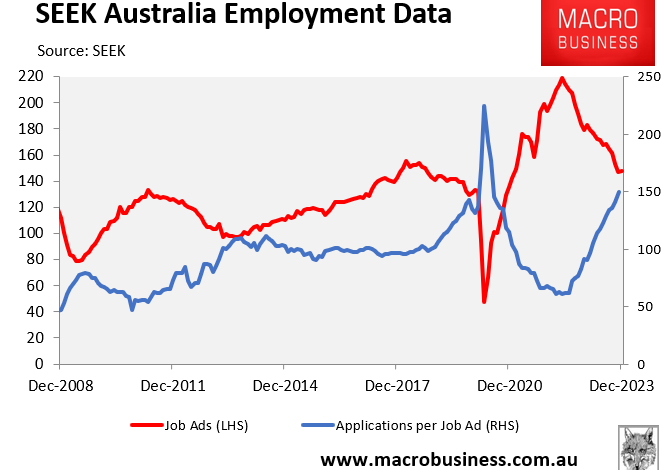
For several months, I have predicted that Australia’s unemployment rate would rise to around 5% by the end of this year, up from 3.9% currently.
The reasons are simple.
Forward-looking indicators like job ads and applications per job ad have deteriorated, as illustrated in the next chart from Seek:
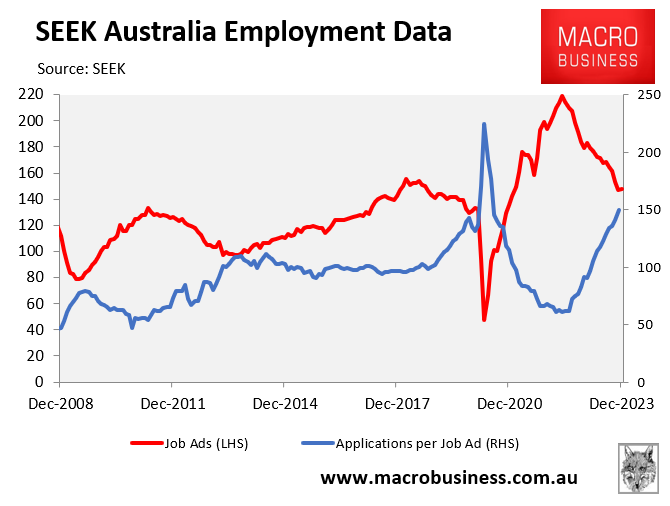
The number of job ads has fallen to around pre-pandemic levels, whereas the number of applicants per job ad has soared well above historical levels.
Advertisement
The surge in applicants per job ad, in particular, suggests that Australia’s unemployment rate will rise significantly in 2024:
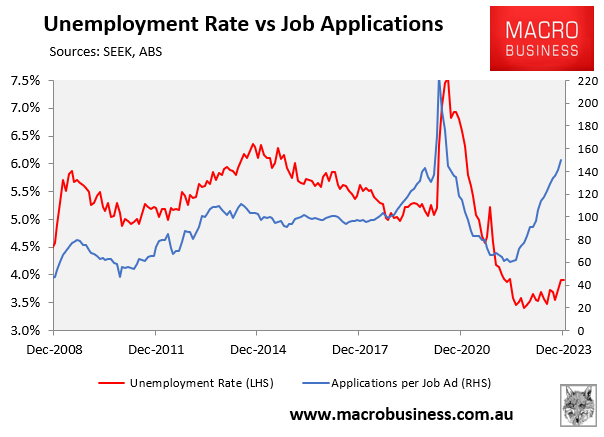
The surge in the number of applicants per job reflects the combination of lower labour demand by employers (reflected in falling job ads), alongside near record labour supply growth owing to Australia’s record high net overseas migration.
Advertisement
The most important chart for the labour market is arguably the next one from CBA. It shows that Australia needs to create around 35,000 jobs per month just to keep the unemployment rate stable:
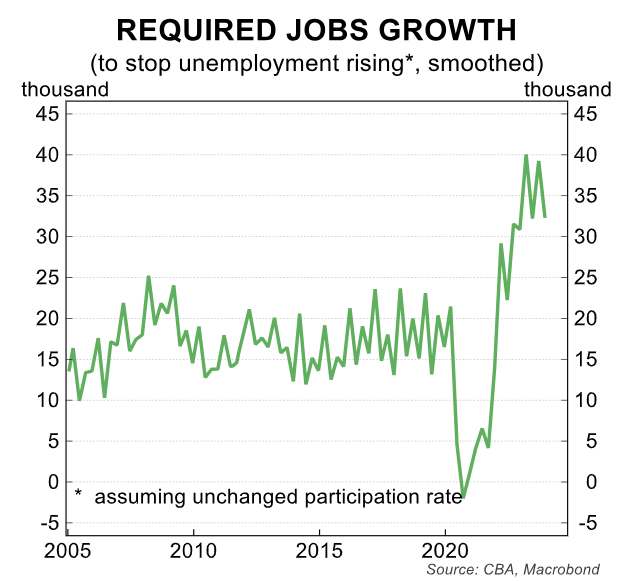
Such jobs growth is highly unrealistic in the face of the high interest rate environment, falling consumer spending, and the per capita recession.
Advertisement
Thus, Australia’s unemployment rate is certain to rise.
Indeed, KPMG chief economist Brendan Rynne has also tipped that Australia’s unemployment rate will rise to 4.8% by the end of 2024 and pass 5% in 2025. This will inevitably also drag down wage growth.
“The outlook for the first half of 2024 is tough, following the domestic economy slowing to a snail’s pace in the second half of 2023. Higher interest rates and low consumer confidence have finally had a significant impact on economic activity, with measures of real household disposable income, consumption and savings showing a noticeable pullback compared with a year ago”, Rynne told Sky News.
“The current, historically-low, unemployment rate will rise to a more natural level of 4.5% over the next six months and into the five’s next year”.
Advertisement
“Slowing employment demand and increased labour supply through migration will also result in a moderation of wages growth as the year progresses, although real wage growth is likely to surface during 2024 as inflation recedes”, Rynne said.
The Albanese government’s extreme immigration is not only depriving Australians of affordable housing; soon it will rob them of jobs and wage growth too.

